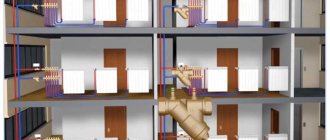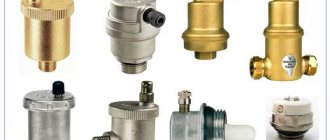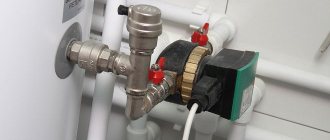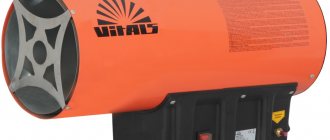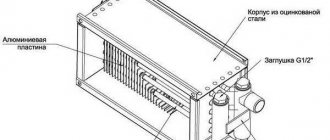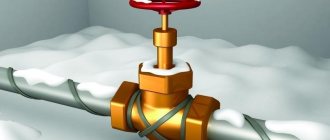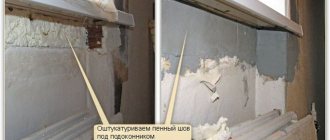A control valve is a fragment of pipeline shut-off and control valves that serves to control the flow and pressure of gas or liquid in a pipeline. It is actively used in everyday life and other areas. There are several types of devices that differ in design elements, type of fixation, and type of locking.
Areas of use and design features
Control valves are used in domestic or industrial gas and water supply systems. They are also installed on main transport pipelines carrying oil and gas. The flow is adjusted by changing the diameter of the passage hole. In this case, the system capacity increases or decreases.
The simplest is the straight-through valve. It contains the following parts:
- a tee body, inside of which there is a passage hole;
- flanges on the pipes (threads may be present in this place);
- seals ensuring the tightness of the device;
- gate;
- rod (a fragment with the help of which the position of the shutter changes).
The cost of the product depends on the material of manufacture, type, size and technical characteristics. The price ranges from 1000−99000 rubles.
Operating principle and advantages
The rod transmits the force coming from the actuator to the plunger. It lowers and changes the cross-section of the throughput hole. As a result, the volume of liquid or gas passing inside the pipe increases or decreases. The speed of movement of the working medium, as well as the pressure inside the system, changes.
A manual shut-off valve can completely close the bypass hole. In this case, the pressure indicator drops to zero. But this is only possible if the contacting units are completely sealed.
The control valve is used on all pipelines without exception. It has the following advantages:
- Durability and reliability. The body of the device can be made of cast iron, stainless steel or metal alloys. All of them are treated with special substances that prevent the negative effects of aggressive components.
- Simplicity of design. The product fully performs its function, and does not contain complex components.
- Possibility of reducing coolant consumption.
- Wide variety of types and designs.
- Reasonable price.
- Significant adjustable range.
The valve has increased tightness.
Classification and scope of application of valves
A control valve is the most common type of fitting for changing the pressure of the medium circulating through a pipeline. Such designs are used in industrial and domestic water supply systems, gas supply and pipelines for transporting oil and gas.
There is also a shut-off and control valve, which allows you not only to change the flow rate, but also to completely shut off the circulation of the medium. In such fittings, a plunger is used as a locking mechanism, the profile part of which, when moved, changes the cross-section of the passage hole, and with full contact with the seat, due to the sealing surfaces, ensures tight cutoff.
The control valve can be made of stainless steel, cast iron, high-alloy alloys or brass. The choice of materials directly depends on the type of working environment with which the reinforcement will come into contact.
Manual valve
Previously, only manually operated valves were supplied to the market, which were controlled by rotating the steering wheel. Such structures, due to the need to apply significant forces, were not used on pipelines of large diameters (over 150 mm).
In modern practice, such designs are used in the domestic sphere, while analogues with automatic control are widely used in industry. The automatic valve regulator is equipped with sensors that record the pressure level in the system and, in accordance with a given algorithm of actions, change the flow of the working medium by moving the valve with an electric, hydraulic or pneumatic drive.
Depending on the shape of the body, valves are divided into the following types:
- walkthroughs - do not change the direction of movement of the working medium, are mounted on straight sections of the pipeline;
- angular – change the direction of the pipeline by 900;
- three-way – the body is equipped with three pipes (2 – inlet, 1 – supply), used for mixing two types of working media into one flow.
Angle valve with flange type electric drive.
Also, classification is carried out according to the method of fixing the valves on the pipeline, according to which the fittings can be welded, flanged, coupling or fitting . In domestic use, the most common are coupling structures that connect to pipes using a threaded connection; in industry, flange fittings (connected with bolts and nuts through a special insert plate) and welded fittings are used.
Design features and principle of operation
As an example, consider a flange-type control valve, the design of which is shown in the image.
Control valve design
The diagram shows the following assembly components:
- B – valve body;
- F – flanges by means of which the fittings are fixed to the pipeline;
- P – sealing block, ensuring the tightness of the valve and preventing the transported medium from escaping outside its body;
- S – rod connecting the valve actuator to the valve mechanism;
- T – plunger acting as a locking unit;
- V – passage hole (seat), into which the shut-off plunger enters when adjusting the pressure.
The principle of operation of the valve is quite simple - the rod transmits the force emanating from the actuator to the plunger, which lowers and changes the cross-section of the orifice, as a result of which the volume of liquid or gas passing through the valve decreases. This leads to a drop in the pressure level in the pipeline and an increase in the speed of movement of the working medium. If the plunger completely blocks the passage hole, the pressure in the system becomes zero, provided that the contacting units are completely sealed.
Features of using control valves (video)
Device classification
Regulators can be classified according to several parameters:
| Characteristic | Types |
| In the direction of flow |
|
| By control method |
|
| By mounting method |
|
What type of valve will be used depends on the scope of its application and the required design features.
Valve types
The valve is the main fragment of the product, with the help of which the cross-section of the passage opening is changed. There are the following types of valves: saddle, spool, cage, membrane.
Saddle and cage
The design of such a device contains a seat and a plunger. The last element is a cylindrical piston, the length of which significantly exceeds the diameter. The seat is a valve component that is located between the passage hole and the internal components of the product.
As soon as the piston begins to move through the seat, the diameter of the bore changes. There are single and double seat valves. The first type of fittings is used in small diameter pipelines.
The cellular product has a seat in which there are radial holes. With their help, the flow of the working medium is regulated. Inside the cell there is a cylinder that moves. It changes the capacity of the hole. The advantage of the product is that it reduces cavitation, vibration and noise .
Diaphragm and spool
The diaphragm valve also has a seat, but a flexible membrane is used to close the hole. It performs several functions. The first of them is monitoring and adjusting the pressure of a liquid (gaseous substance). The second function is to protect the internal components of shut-off valves from the effects of aggressive chemical components.
The advantage of the device is the high reliability and tightness of the moving elements. The membrane is also made from materials that are resistant to corrosion. To ensure that the quality of the valve does not deteriorate over time, the design will have to be additionally equipped with positioners, with the help of which the position of the rod is controlled. These elements will prevent the accuracy of the adjustment.
The last type of valve is a spool valve. Adjusting the flow of liquid or gas in this case depends on the angle at which the valve is turned. Most often, devices of this type are used in the energy sector. According to the principle of operation, a spool valve can be classified as a faucet.
Shut-off valves
In heating systems, shut-off valves for heating are used to control the supply of coolant, as well as to open the circuit.
It allows you to control the heating process, making it more efficient and rational. In most cases, the shut-off valve on the heating radiator is installed in the radiator piping areas. In addition to functional advantages, this solution also has practical benefits - by closing the shut-off valve for the heating radiator, the homeowner will be able to repair the heating device without stopping the operation of the entire heating system. At the moment, shut-off valves for heating are represented by a wide range of devices. The following types of devices are often used in heating systems:
- shut-off valves;
- Ball Valves;
- needle valve;
- valves
These elements are made of durable metals that are resistant to corrosion and high temperatures. Shut-off valves protect the circuit from critical emergencies and increase the reliability of the heating system, helping to minimize the negative consequences of failure of an individual heating device.
Ball Valves
A ball valve is a shut-off valve for heating radiators, which is installed to regulate the flow of coolant. The design of the fittings includes a union nut, an internal thread, a plug and an air release device designed to bleed air from the system. When choosing this type of fittings, you need to pay attention to the material from which the valve is made and the presence of o-rings, which increase the service life of the element in the circuit. Brass taps have proven themselves well, as they are characterized by increased wear resistance and corrosion resistance.
Shut-off valves
This type of fittings is used to make it possible to replace radiators without draining the coolant from the circuit. Based on their design features, there are angle and straight shut-off valves. Moreover, some models can be equipped with a release mechanism to smoothly reduce the pressure in the circuit. Shut-off valves are characterized by a hose nozzle - it allows installation of the device as quickly and simply as possible.
Needle tap
The functions performed by a needle tap for heating can be different. Depending on the design, this device can perform locking, regulating and balancing functions. In heating systems, a shut-off needle valve for the heating radiator is most often used, which allows you to smoothly shut off the flow and avoid the occurrence of water hammer, which is detrimental to the system. Unlike a ball valve, which has two operating positions, a needle valve can operate in three positions:
- "closed";
- "open";
- "partially closed".
Valves
This type of valve performs exclusively a shut-off function. Due to its design features, it can operate in two modes - the mechanism is equipped with a locking element located perpendicular to the coolant flow. In the open position, the valve supplies coolant to the circuit, and in the closed position it prevents its circulation. Among the features of the valve, it is worth noting the low hydraulic resistance created in the circuit, the optimal diameter of the internal section, which coincides with the diameter of the pipeline, simple installation and high reliability.
Features of product selection
In order for the valve to work effectively, it must be correctly selected and installed. To make the right purchase, you need to consider the following parameters:
- Diameter of pipe and through hole. This takes into account the type of medium with which the pipeline will work and its size. The larger the diameter of the orifice, the wider the range it can operate. But when choosing large indicators, the pressure inside the system is taken into account.
- Locking type. The valve can be a control valve or a shut-off valve. In the second case, the pipe lumen may be completely blocked.
- Range of application.
- Material of manufacture. Here the choice depends on the conditions of use of the device.
- Type of fixation on the pipe.
- Product control method. For automatic valves to operate, they must be connected to an electrical outlet.
- Type of adjustment mechanism.
The size of the housing and the diameter of the pipes must match the size of the pipeline.
A control valve is an essential element of shut-off valves. It allows you to reduce the consumption of liquid coolant or gaseous substance. In the event of a pipeline failure, the shut-off element will allow only a certain part of the system to be stopped for repairs.
Varieties
As already noted, the name “two-way” indicates that the device has an output and an input. But his angular or direct execution does not play a significant role. It is selected according to need.
Both straight and angle taps can be equipped with an automatic control system. It is usually implemented using an electric drive, which can operate independently. You can also control it using a remote control.
Thanks to the presence of a servo drive, the movement of a two-way valve can be carried out, as a result of which it can either pass or not pass liquid or gas, or pass in a certain amount depending on the pressure, valve position and hydraulic resistance.
Automatic 2-way control valve
CV216MZ Threaded 2 Way Control Valve with Electric Actuator
Such a device is produced with a set of sensors, an electric drive and a microcontroller. Thanks to microcontroller control of the crane, it is possible to receive and process information provided by sensors. Further developments depend on how the device is programmed.
A two-way valve may not be a shut-off valve, but only a control valve. In this case, it will not be able to provide you with high-quality shutoff of the liquid flow. This is why it is necessary to additionally install separate shut-off valves. If the device is a shut-off and control valve, then there is no need for auxiliary elements of shut-off valves.
There are pass-through units that can function autonomously, and their operation does not require electrical power. This is a rod fitting with a membrane and a counteracting spring. The rod is controlled and adjusted by a diaphragm and a spring. Feedback is provided by a contour along which water moves from the route. Thus, it will direct the membrane in the right direction and at the same time move the rod to which the locking element is attached.
Remote controlled valves
It is much easier and more convenient to control a 2-way valve remotely than a three-way valve. However, this control method necessarily requires the presence of electric drives and a remote control (one or more). Such control rooms will receive all the information about the condition of different sections of the heating main. From one of these rooms you can manage the process of functioning of the heating network. You can reduce or increase pressure, or block specific branches.
To summarize all of the above, it is worth mentioning the advantages that a two-way control valve has:
- regulates the consumption and distribution of resources (environment), thereby ensuring their savings;
- protects networks and equipment from pressure surges;
- the device is easy to install and repair;
- thanks to this device, the devices will work efficiently and without failures for a long time
- time, the main thing is to find the right use for it.

